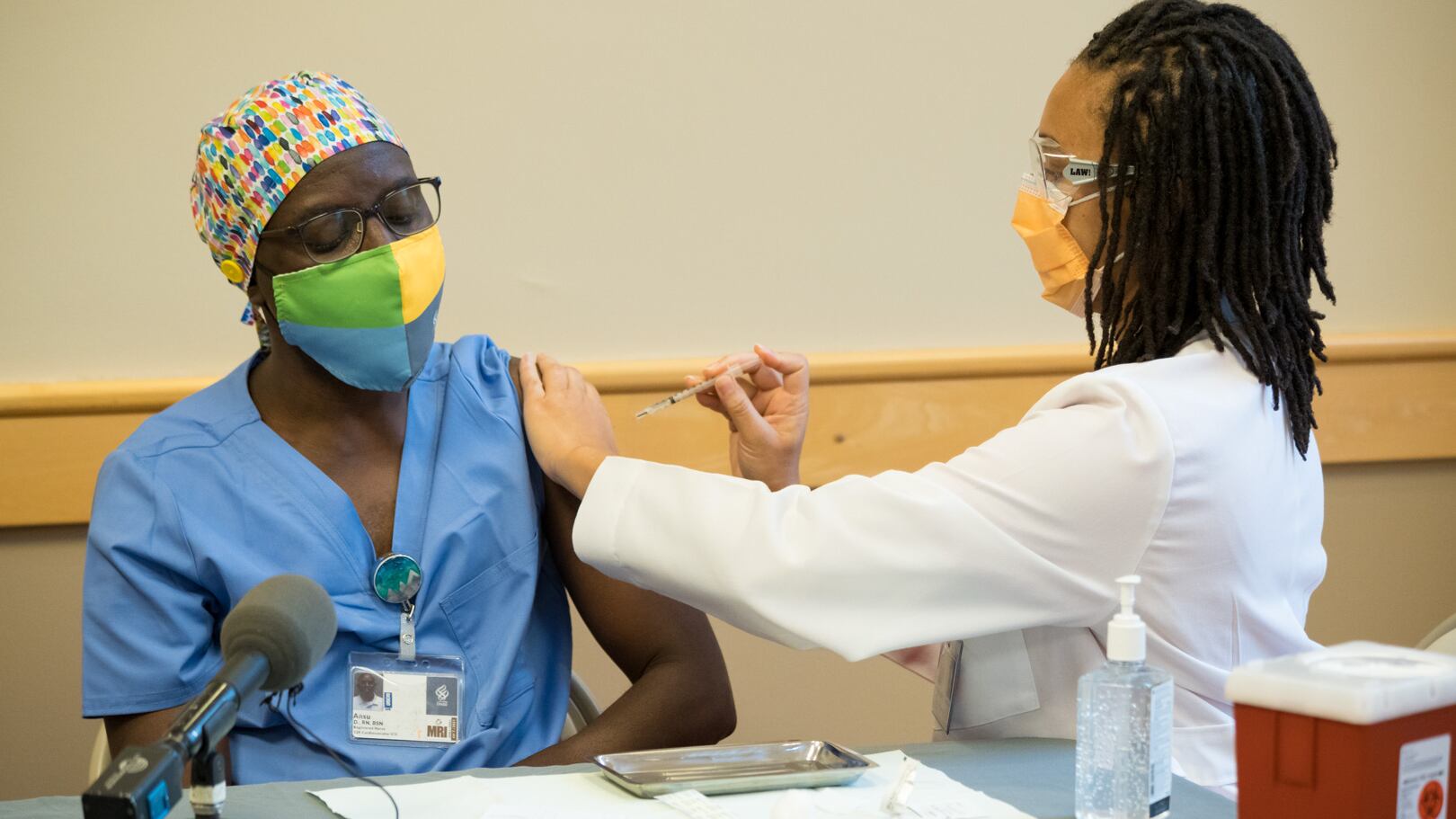The first handful of Pfizer COVID-19 vaccines were administered to Oregon's frontline health care workers this morning, during a public livestream arranged by Gov. Kate Brown.
The three hospitals that received the first doses of the two-dose vaccine were Legacy Emanuel Medical Center, Oregon Health & Science University, and Saint Alphonsus in Ontario.
"This is truly the moment we have all been waiting for," Brown said. "The delivery of a safe and effective COVID-19 vaccine brings an overwhelming sense of hope and a promise to us all."
The livestream first showed five health care workers at Legacy Health getting their first dose, including nurses, a radiographer and a respiratory therapist. Among them was Mira Gomez, a registered ICU nurse.
"I'm taking this vaccine for my family and also for my community," Gomez says. "As a Hispanic nurse, this is disproportionately affecting people of color, and I want to lead by example."
The vaccinations marked the start of a new stage in the coronavirus pandemic. Even as frontline health care workers receive doses of Pfizer and Moderna vaccines, the state's intensive care units remain jammed with extremely sick patients—the result of a surge in cases that began in mid-November and has not slowed amid the holiday bustle.
Related: Three nurses describe life and death during the worst week yet of the pandemic.
The public event was met with questions from the press about why state officials and hospitals waited two days after the vaccine's arrival to begin giving shots. (Oregon is the 49th state to begin the vaccination process, The Oregonian reported Tuesday.)
Brian Terrett, Legacy Health's communications director, said the hospital system took an extra day to ensure that the doctors and nurses receiving vaccines today could then take scheduled time off, in case they experienced any side effects.
"If they have side effects, they will occur on their days off, and it won't impact our ability to staff beds," Terrett said. "We felt it was important to do it the right way and the safe way, and within 48 hours of receiving the vaccine certainly means that we're getting the vaccines out."
Reporters also raised questions about how many doses of the vaccine Oregon has actually received, after Oregon Health Authority director Pat Allen presented conflicting figures.
In fact, the state has received far fewer doses than Allen had initially indicated but expects to receive more later this week.
"Currently, there are 4,875 doses in Oregon," says OHA spokesman Jonathan Modie. "That's the 975 each at the five sites we announced this week. That's of the total allotment of 35,100 we are expected to receive this week."
Brown emphasized the turning point the vaccine represents for beleaguered health care professionals.
"These heroes have poured everything they have into this fight. It hasn't been easy," Brown said. "To all of our health care workers, we say thank you. Thank you for your courage. Thank you for your commitment in serving your fellow Oregonians over the past several months."

Oregon Health & Science University was the next hospital to livestream one of the first doses in the state. Over the next three days, 975 OHSU staff will get the vaccine.
Dr. Renee Edwards said that Ryan Thrower with OHSU "is the first dental resident in the United States and, to our knowledge, the world to administer a COVID-19 vaccine. Oregon is the only state that allows dentists and dental students to administer any vaccine to patients of any age."
Thrower vaccinated an intensive care nurse at OHSU on camera. The last hospital to document the vaccine via livestream was Saint Alphonsus in Ontario, although it had given shots earlier in the morning.
Allen said that by the end of this month, 200,000 doses of the vaccine will be distributed to 100,000 individuals at health care and long-term care facilities. The agency later clarified that it would give the first 100,000 doses this month and follow up with second doses early next month.
The state has not received an update from the federal government on the quantity of vaccines expected after these initial doses. But Brown said the state will convene a vaccine advisory committee to determine which essential workers should go next after frontline workers. That decision will involve public input, she said.
Allen also explained the state's distribution plan in three phases. Phase 1 is divided into three subsections: 1a is health care workers and long-term care facility workers, 1b is essential and critical industries, and 1c will be high-risk patients, such as those with underlying conditions and people over 65.
Phase 2 includes other critical populations, and Phase 3 is the general population. The exact timeline is unclear until the federal government specifies the number of doses Oregon should expect to receive.
"By the time we get to Phase 3, there should be enough vaccines for people to obtain vaccines in the same way they get other ones," Allen said.
Although the vaccine is being distributed to nurses and other frontline health care workers, they will continue to have to follow COVID-19 guidelines until the vaccine is widely available to everyone and community immunity is achieved.
"The virus has changed to so much for us," Allen says. "All of us need to do our part and get vaccinated like these health care workers did today. We all need to keep up our guard, keep on our masks, limiting our social get-togethers, stay home and wash your hands."

